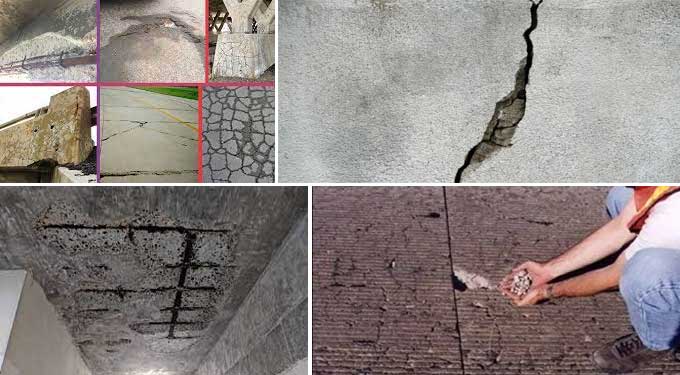
Visual Inspection Report for Concrete Distress in Construction
Experiencing management services and testing can cause concrete to deteriorate and decompose as a result of external conditions, autogenously internal influences, and exposure to the environment.
Visual inspection reports must accurately describe and identify distresses such as delamination, chalking, cracking, and flaking of concrete. Engineers and contractors can use this information to choose the right materials for the job and follow the right procedures.
Step by Step Process of Concrete Distress for Visual Inspection Report
Curling
Inconsistency between the temperature and moisture content of zones adjacent to opposite faces causes a concrete member to distort from its original shape.
Distortion
Concrete members can be distorted when their shape or dimensions change.
Drummy Area
The hollow sound is caused by voids under a concrete layer caused by poor consolidation, or delamination of the concrete layer.
Chalking
Powder formed as a result of disintegration of concrete surfaces or application of coatings like Cementitious coatings.
Delamination
Concrete delamination occurs when it separates along a plane parallel to a surface. In much the same way as scaling and peeling, it affects larger areas. Concrete delamination can be detected by tapping or chain dragging.
Joint Deficiencies
A joint defect can be caused by spalling concrete adjacent to a joint, cracking joint sealant, which leads to the opening of a joint, leakage due to liquid moving through the joint, or fault caused by differential displacement of a part of a structure along a joint.
Peeling
In the process of stripping concrete, peeling occurs when thin flakes of mortar break away from a concrete surface because of deterioration or adhesion of mortar to forms.
Scaling
Localized flaking or peeling away of hardened concrete or mortar is called scaling, and it can be light, medium, severe, or very severe.
Scaling of light concrete does not expose aggregate, while medium concrete loss reveals the surface mortar and its aggregate from 5 mm to 10 mm.
When concrete is severely scaled, mortar around aggregates and aggregate itself loses some aggregate particles. Approximately 5 mm to 10 mm of aggregate particles are lost.
If the aggregate and surface mortar has been lost to a depth of around 20 mm, it is considered severely scaled.
Efflorescence
On a concrete surface, efflorescence forms a white salt. As the salt solution migrates within concrete or masonry, precipitates due to a reaction similar to carbonation evaporation.
Spalling
A blow, fire, pressure, or expansion within the concrete mass can cause concrete fragments to separate from the mass.
Spalls are circular depressions in concrete that are at least 20 millimeters deep and 150 millimeters wide. When their depth exceeds 20 to 150 millimeters, large spalls may be circular, oval, or even elongated.
Disintegration
Erosion, abrasion, cavitations, biological attack, and chemical attack reduce concrete into small fragments and ultimately into particles.
Deflection
The displacement of a point on a structural element as measured by a linear distance from a reference axis is referred to as deflection.
Leakage
It is the migration of liquids and gases through concrete that causes leakage.
Peeling
In stripping, peeling occurs when thin flakes of mortar separate from a concrete surface because of deterioration or adhesion.
To get more details, watch the following video tutorial.
Video Source: Civil Department
Exfoliation
Like a partially opened book, concrete expiates by peeling off successive layers, swelling, and opening into leaves or plates.
Pitting
Pitting on concrete surfaces refers to a localized disintegration, like pop out, and localized corrosion, as evidenced by minute cavities.

Exudation
During the exudation process, concrete surface pores, cracks, or openings discharge liquid, gel like material.
Pop Out
Concrete pop out is caused by localized internal pressure and results in a shallow, typically conical depression at the bottom with broken coarse aggregate.
Mortar Flaking
Scaling over coarse aggregate is known as mortar flaking.

